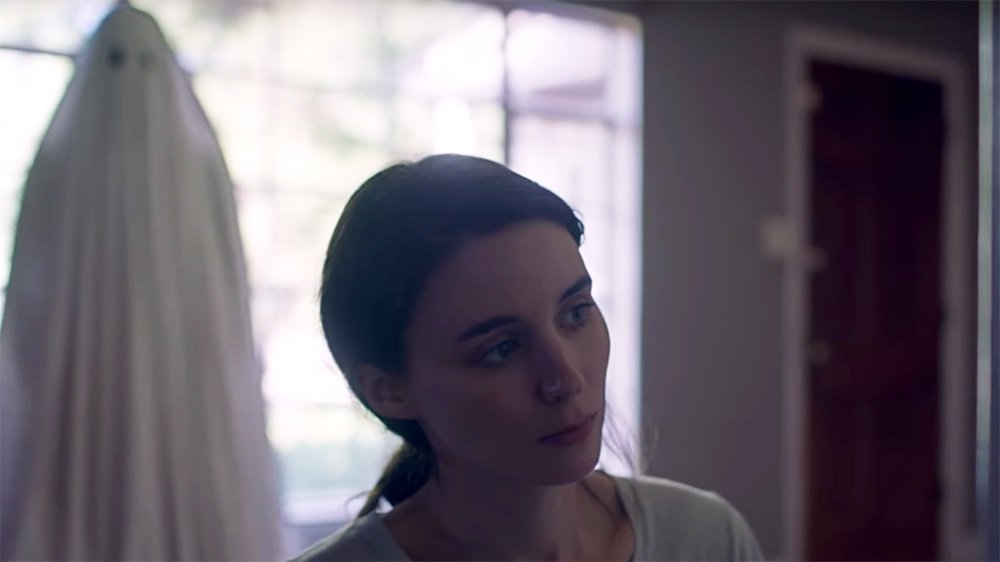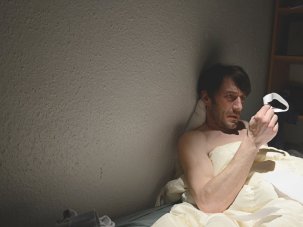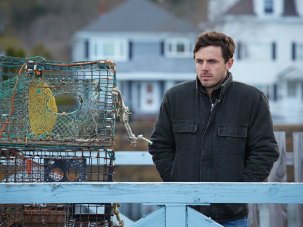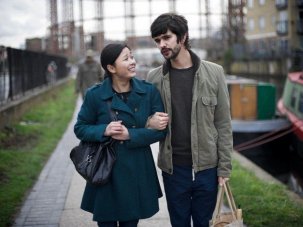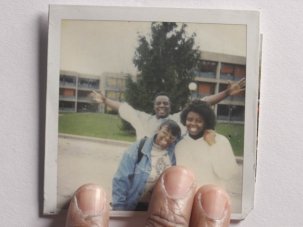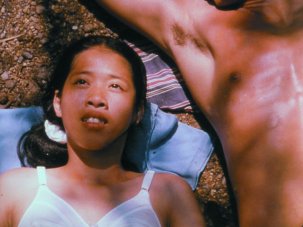Spoiler alert: this review reveals a plot twist
Coming straight off his big Disney project Pete’s Dragon, writer-director David Lowery has reunited the central Rooney Mara/Casey Affleck cast from his 2013 Sundance hit Ain’t Them Bodies Saints and returned to Texas-indie basics for A Ghost Story. Lowery has cited Tsai Ming-liang, Apichatpong Weerasethakul and Chantal Akerman as direct influences, and there are certainly echoes of their work in the long takes and slow pace evident here – not to mention the love confusion from Tsai, magical incursions from Weerasethakul, and the piercing sadness of Akerman. Most viewers, however, will find themselves thinking of Terrence Malick’s Badlands (1973) or Tree of Life (2011).
USA 2017
Certificate 12A 92m 6s
Director David Lowery
Cast
Casey Affleck C
Rooney Mara M
Kesha Sebert [i.e. Kesha] spirit girl
Will Oldham [i.e. Bonnie ‘Prince’ Billy] prognosticator
David Pink ghost stage 2
[1.33:1]
UK release date 11 August 2017 in cinemas
Distributor Picturehouse Entertainment
picturehouseentertainment.co.uk/a-ghost-story
► Trailer
Although it opens with a quote from Virginia Woolf’s 1921 short story A Haunted House – “Whatever hour you woke there was a door shutting” – this is not a conventional ghost story. ‘C’ (Affleck) and ‘M’ (Mara) are a bohemian couple living in a rundown house in suburban Texas, physically very intimate and – in a charming, dawdling way – unsure whether or not to move house. Strange patterns of light appear on the wall and the piano sounds in the middle of the night, seemingly intimating something ominous and eternal, though nothing is explained at the time.
Then we see the aftermath of an accident, and C dead at the wheel of a car. For the rest of the movie he is swathed in a morgue sheet, with eyeholes cut out, so that he looks a little like a child’s drawing of a ghost, or someone in a Halloween costume. C distractedly observes M mourn, though she doesn’t sense his presence. In one long and rather remarkable scene, she sits on the kitchen floor and does nothing but eat a chocolate pie brought by a friend, all sugar and hurt.
After M leaves the house for ever, C sees in the window of the next-door house another ghost, sheeted, like him. We understand, from the patterning on the sheet, that this is a female spirit (played by the pop star Kesha). The two ghosts can communicate wordlessly, and their exchanges reveal a deep sadness, to the point of distraction, almost dementia. It’s among the most poignant moments in a film that is all about being lost rather than simply dead. “I’m waiting for someone,” says the neighbouring spirit, but when C asks who she’s waiting for, she replies: “I don’t remember.”
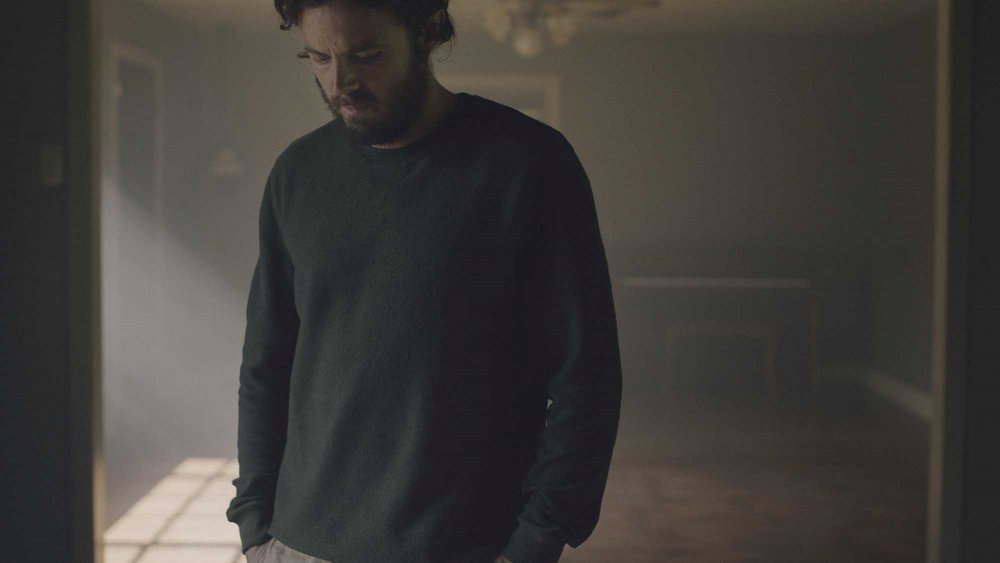
Later, after other families have come and gone and the house has been demolished, the director sends C hurtling forwards, backwards and sideways in time. He arrives in a kind of futurescape boardroom, built on the same site; fleeing this reality, he falls backwards in time to a rustic 19th-century frontier. He even haunts his own living self, inadvertently causing the very piano clang that spooked him and M early in the film. It gets to a point of temporal complication where the sheeted C is haunting sheeted C observing himself alive with M. It’s a kind of infinite reverb that shows reality to be no longer sustainable.
This is a film not so much about spooks as about deadly loss and the disorientation it brings. It’s also, parapsychologically speaking, a very modern take on the idea of the ghost, in which they are, as the paranormal researcher Hans Holzer proposed, confused, almost showing signs of brain damage. As in all good ghost movies, the use of sound is important, and Lowery’s regular composer Daniel Hart contributes a song, I Get Overwhelmed, which sets the sorrowful mood.
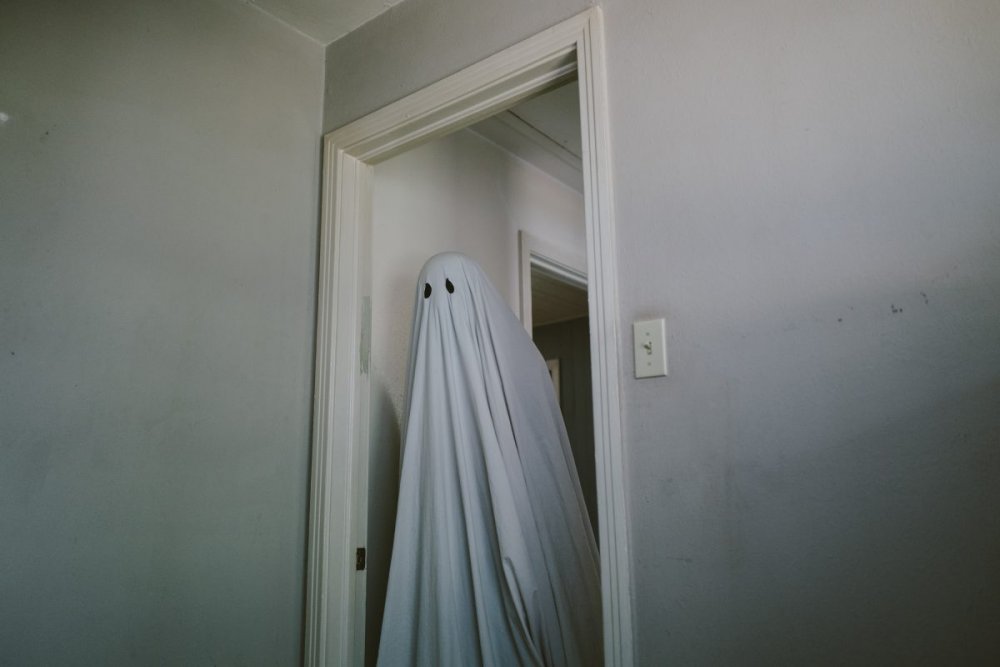
A Ghost Story is also beautifully composed and lit. It is shot in a 1:33 ratio, which means that we see a box marking out the rectangle of the screen, cutting off the greater part of the landscape either side, by default piling up the vertical sense of the images. This works well with the essentially triangular shape of the phantom (which while sheeted is mostly played by art director David Pink).
To take the idea of such a ghost, which is a comic-book modification of the 17th-century notion of spectres wearing grave clothes, is a bold visual move. It is inherently preposterous: a sheet with holes punched through for eyes. Designed by Annell Brodeur, the sheet garb was by all accounts difficult to film, which makes sense when you think about it – this teetering on the verge of a hoodoo absurdity. Yet absurdity is avoided. The sudden movements of the ghost as it turns its head, the fabric folds immaculately lit and not quite falling in a naturalistic fashion, are very suggestive.
The film takes a huge risk with this central, absurdist image, but makes it work on every level – effortlessly, gracefully, creating a lyrical exploration of emotional fade and loss.
In the September 2017 issue of Sight & Sound
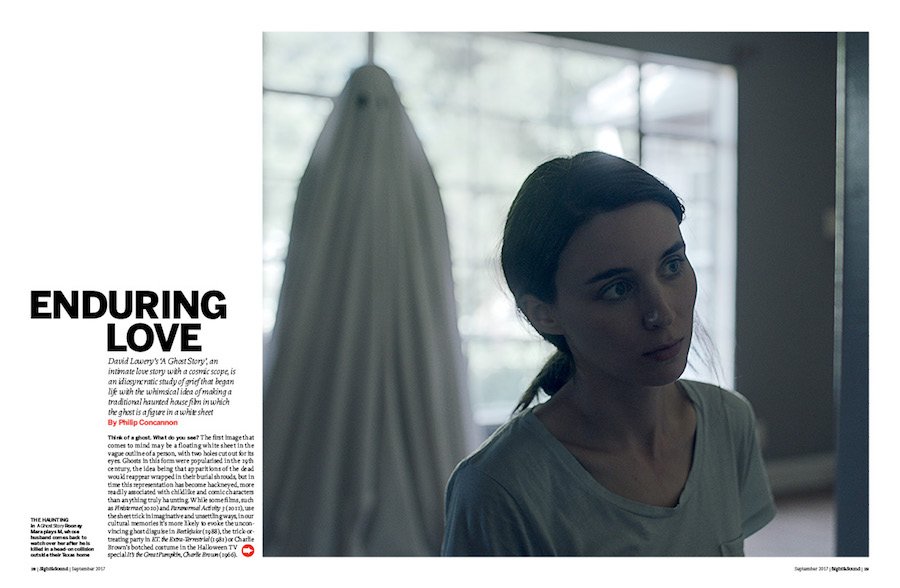
Enduring love
David Lowery’s A Ghost Story, an intimate love story with a cosmic scope, is an idiosyncratic study of grief that began life with the whimsical idea of making a traditional haunted house film in which the ghost is a figure in a white sheet. By Philip Concannon.
-
The Digital Edition and Archive quick link
Log in here to your digital edition and archive subscription, take a look at the packages on offer and buy a subscription.




